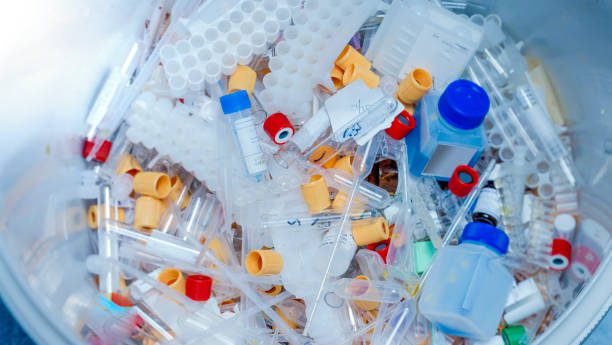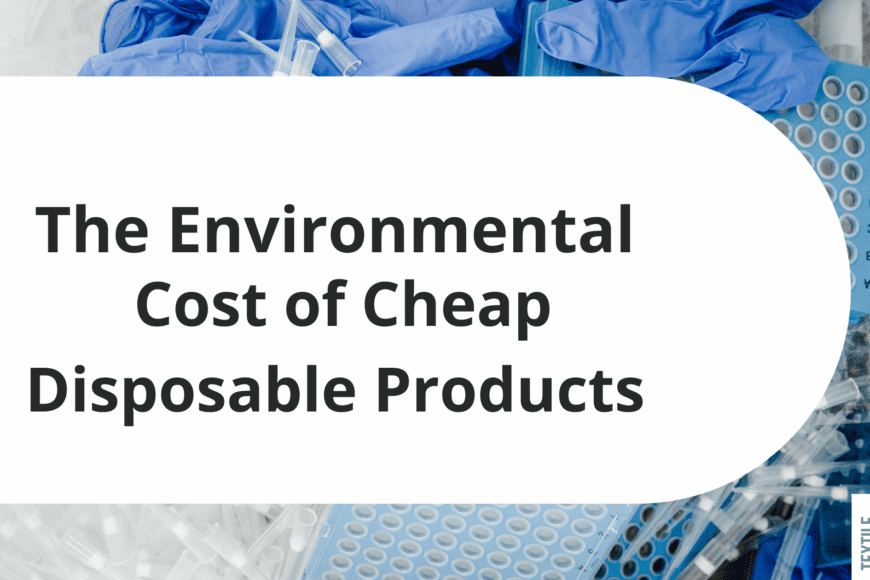The term “single-use” refers to any item designed for disposal after one use, such as water bottles, grocery bags, or disposal cutlery. Although single-use items are widely used around the world for household or commercial purposes, they are also common in the medical field, including face masks, vinyl gloves, surgical robes, etc.
Why We Need To Reduce Use of Disposable Products in the Medical Industry
Most single-use items and packaging tend to be made of plastic since the material is both cheap and versatile to produce. The problem is, recycling plastic is harder than most people realize. The most recent plastic recycling rate in the US is an abysmal 5%. The medical field also has a recycling problem: approximately $15 million worth of surgical equipment and one million tons of clean healthcare plastics are wasted each year in the United States.
If only 5% of U.S. plastic is recycled, then the rest is destined for landfill or incinerators. However, some of it also manages to leak into the environment. The problem here is that plastics don’t naturally biodegrade; instead, they break apart into smaller pieces of plastic (microplastics) that contaminate food and water sources.
The Effects of Single-use Plastics on Your Health
Not only do we unknowingly consume plastic particles, but it’s estimated that 80% of Americans have microplastics in their blood.
Even before birth, fetuses are exposed to microplastics in the placenta. In other words, there is no escaping plastic; it is all around us and inside our bodies. More research is needed to fully understand the long-term health impacts of plastic, but the outlook is not favorable. This is why we need to be more mindful about how we use and dispose of plastic, no matter how beneficial single-use items can be.
Single-Use Waste in the Medical Industry
Single-use items are used in the healthcare industry because they are perceived to be clean and sterilized. By using an item only once, medical providers can ensure that infectious diseases are not spread among their patients.
But perception does not always align with reality: According to the World Health Organization, only 15% of medical waste is toxic, infectious, or radioactive. The remaining 85% is non-hazardous and can be treated as regular waste. It’s worth exploring alternative solutions to single-use items to eliminate unnecessary waste in hospitals and clinics. Not only does this protect the environment, but it can also help hospitals reduce expenses and expand care to more patients.
Eliminating single-use items from the medical field is just as difficult as banning any other single-use item. These items are designed for convenience, and over time people become accustomed to their presence. When single-use items transition from becoming a choice to an expectation, they can easily blend into the background unnoticed.
A study found that 57% of Mayo Clinic hospital staff surveyed didn’t know which items in the operating room were recyclable, and just under half of them attributed it to a lack of knowledge. Just because hospital staff has abundant knowledge in their respective fields doesn’t necessarily mean that they are properly educated on recycling and proper waste disposal.
The good news is that a little bit of education has a huge impact on cost savings. The same Mayo Clinic study from above implemented a recycling system for sharps waste that resulted in 10% savings after one year. In Toronto, Canada, a waste reduction effort by a team of surgeons led to a 30% savings which led to more surgeons hired and an additional 150 operations per year.

How to Reduce Single-Use Medical Waste
Option #1: Reduce
The best way to reduce waste is not to produce it in the first place. A group of nurses in a London hospital found that certain activities don’t require the use of gloves, including bathing babies or moving beds. By eliminating the use of gloves in unnecessary situations, they actually reduced their plastic usage by 21 tons! A simple audit of hospital and clinic procedures can help uncover unnecessary and wasteful habits.
Option #2: Reuse
Another way to reduce waste is to replace single-use items with reusable alternatives. The Envo Mask, for example, is a reusable N95 mask that provides users with a tight seal and only requires replacing a filter instead of the entire mask. Other reusable options include surgical gowns, bed pads, pillows, face shields, goggles, and sterilization trays. Of course, switching to reusable options can only be accomplished if there is a process in place to properly clean and sterilize the items.
Option #3: Recycle
If it’s not possible to reduce or reuse, then recycling should be the absolute last resort. Recycling can be difficult, especially for items like face masks that contain various types of plastic. However, there are organizations like Plaxtil, that will collect, sanitize, and manufacture new PPE from discarded face masks. Depending on your location, the Earth911 directory is a great resource for finding recycling options nearby.
Zero Panik Can Help
Single-use items are useful in reducing cross-contamination within the healthcare industry. However, the excess waste produced from these items is both unnecessary and harmful. It’s possible to provide quality care to patients without negatively impacting the environment or human health.
Zero Panik can help hospitals and healthcare facilities alike conduct waste audits to seek out reasonable ways to reduce waste and costs in their organizations. We can also measure progress toward sustainability goals by developing and implementing procedures and key performance indicators (KPIs). Reducing your environmental impact is not only the right thing to do but can also result in cost savings that can be redirected back into patient care.
If you’re interested in scheduling a consultation, contact us here.

